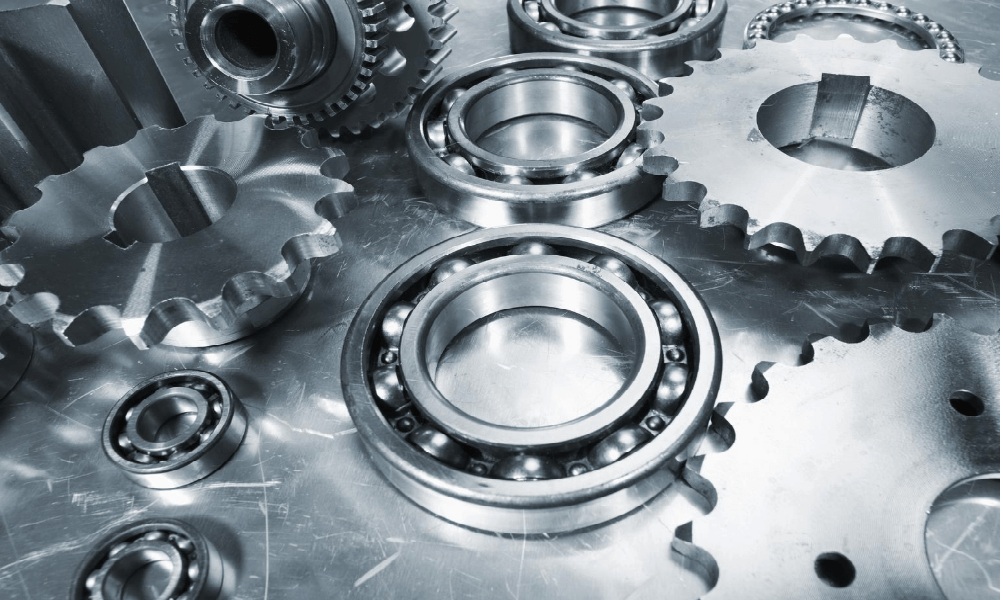Ford Motor Company, a pioneer in automotive manufacturing, has been at the forefront of integrating advanced materials into vehicle production. Among these materials, titanium stands out for its exceptional properties and potential to revolutionize the automotive industry.

The Titanium Advantage
Titanium, a silver-gray metal, offers a unique combination of properties that make it highly desirable for automotive applications:
- Strength-to-Weight Ratio: It boasts an impressive strength-to-weight ratio, being as strong as steel but 45% lighter.
- Corrosion Resistance: It exhibits excellent resistance to corrosion, even in harsh environments.
- Heat Resistance: It maintains strength at high temperatures, making it ideal for engine components.
- Durability: The metal’s fatigue resistance ensures longevity in high-stress applications.
These properties align perfectly with vehicle performance, fuel efficiency, and sustainability goals.
Historical Context: The Ford Titanium Journey
The Ford exploration of titanium in automotive applications dates back several decades. Initially, the high cost and complex manufacturing processes limited its use to high-performance and luxury vehicles. However, as technology advanced and production methods improved, Ford expanded its titanium applications.
Early Applications
In the early 2000s, Ford started incorporating titanium in select components of high-performance vehicles:
- Exhaust Systems: The Ford GT supercar featured a titanium exhaust system, reducing weight and enhancing performance.
- Valve Springs: Some high-revving engines use titanium valve springs to improve engine responsiveness and durability.
Expanding Horizons
As Ford continued to innovate, this metal found its way into more mainstream applications:
- Turbocharger Components: Titanium aluminide was used in turbocharger wheels, improving throttle response and reducing fuel consumption.
- Suspension Components: Certain performance-oriented models incorporated titanium springs, reducing unsprung weight and enhancing handling.
Recent Developments: The Titanium Revolution
In recent years, Ford has made significant strides in titanium utilization, partnering with innovative companies to push the boundaries of automotive engineering.
Collaboration with IperionX
In a groundbreaking move, Ford has partnered with IperionX Limited to supply additively manufactured titanium components using 100% recycled, low-carbon titanium powder. This collaboration marks a significant step toward sustainable and circular manufacturing in the automotive industry.
Key aspects of this partnership include:
- Sustainable Production: IperionX’s proprietary technology allows for the use of recycled scrap, significantly reducing the carbon footprint of titanium production.
- Additive Manufacturing: The use of 3D printing technologies enables the creation of complex geometries that were previously impossible or impractical to manufacture.
- Performance Vehicles Focus: The initial focus is on Ford Performance vehicles, known for pushing the boundaries of automotive engineering.
- Quality Assurance: Rigorous testing by Ford Sustainability and Advanced Materials divisions has verified that IperionX’s titanium meets or exceeds ASTM International standards.
Applications in Ford Performance Vehicles
The collaboration between Ford and IperionX is revolutionizing several aspects of vehicle design and performance:
- Weight Reduction: These components can replace heavier steel parts, significantly reducing overall vehicle weight and improving fuel efficiency.
- Enhanced Performance: The high strength-to-weight ratio of this metal allows for creating performance-critical components that can withstand high stresses while minimizing weight.
- Improved Durability: Corrosion resistance and fatigue strength contribute to longer-lasting components, potentially reducing maintenance needs and extending vehicle lifespan.
- Design Flexibility: Additive manufacturing techniques enable the creation of optimized designs that maximize strength while minimizing material use.
The Future of Titanium in Ford Vehicles
As Ford continues to innovate and expand its use of titanium, several exciting possibilities emerge:
Broader Implementation
While current efforts focus on high-performance vehicles, the lessons learned and technologies developed could pave the way for titanium use in a wider range of Ford vehicles, leading to:
- Improved Fuel Efficiency: Lighter vehicles require less energy to move, potentially improving fuel economy across the lineup.
- Enhanced Electric Vehicle Range: In electric vehicles, weight reduction directly translates to increased range, making it an attractive material for EV components.
- Increased Safety: The high strength of this metal could be utilized in safety-critical components, enhancing vehicle crash performance without adding significant weight.
Advanced Manufacturing Techniques
The investment in additive manufacturing for titanium components opens up new possibilities:
- Customization: 3D printing allows for easier customization of parts, potentially enabling more personalized vehicle options.
- Rapid Prototyping: Faster development cycles for new components can accelerate innovation across the lineup of Ford vehicles.
- Supply Chain Optimization: On-demand manufacturing of titanium parts could reduce inventory costs and improve supply chain resilience.
Sustainability Initiatives
The use of recycled titanium aligns with a commitment to sustainability:
- Circular Economy: Using recycled materials, Ford is moving towards a more circular manufacturing model, reducing waste and environmental impact.
- Carbon Footprint Reduction: The lower carbon footprint of recycled titanium production contributes to the goal of achieving carbon neutrality by 2050.
- Resource Conservation: Recycling helps conserve natural resources and reduces the need for environmentally intensive mining operations.
Challenges and Opportunities
While the future of titanium in Ford vehicles looks promising, several challenges remain:
- Cost Management: Despite advancements, this metal remains more expensive than traditional materials. Ford will need to balance the benefits of this metal against its cost to ensure market competitiveness.
- Manufacturing Scale: Scaling up production and additive manufacturing processes to meet the demands of mass production presents technical and logistical challenges.
- Material Education: As this metal becomes more prevalent, Ford will need to educate its workforce, from engineers to service technicians, on the unique properties and handling requirements of components.
- Regulatory Compliance: Ensuring components meet all relevant safety and environmental regulations will be crucial for widespread adoption.
These challenges also present opportunities for Ford to lead the industry in advanced materials and sustainable manufacturing practices.
The Role of Titanium in Future Ford Vehicles
Investing in titanium technology represents more than a material change; it’s a paradigm shift in automotive engineering and manufacturing. By leveraging the unique properties of this metal and embracing innovative production methods, Ford is positioning itself at the forefront of sustainable, high-performance vehicle manufacturing.
The collaboration with companies like IperionX demonstrates a commitment to not just adopting new materials but also revolutionizing the entire supply chain and production process. This holistic approach to innovation ensures that the benefits extend beyond just the final product, encompassing reduced environmental impact, enhanced performance, and improved sustainability.
As Ford continues to push the boundaries of what’s possible in automotive engineering, titanium will undoubtedly play a crucial role. From high-performance vehicles to everyday cars, the lightweight strength and durability promise to shape the future of the lineup, driving us toward a more efficient, sustainable, and exciting automotive future.
The journey of titanium in Ford vehicles is just beginning, and the road ahead is filled with potential. As technology advances and production methods evolve, we can expect to see even more innovative applications of this remarkable metal in the cars and trucks that bear the Ford badge.
Questions and Answers
What are the main advantages of using titanium in automotive manufacturing?
- The main advantages of this metal in automotive manufacturing include its high strength-to-weight ratio (as strong as steel but 45% lighter), excellent corrosion resistance, heat resistance, and durability. These properties contribute to improved vehicle performance, fuel efficiency, and longevity of components.
How is Ford incorporating sustainability into its titanium usage?
- Ford is partnering with companies like IperionX to use 100% recycled, low-carbon powder for additive manufacturing of components. This approach reduces the carbon footprint of production, aligns with circular economy principles, and contributes to achieving carbon neutrality by 2050.
What challenges does Ford face in expanding the use of titanium in its vehicles?
- Key challenges include managing the higher cost of this metal compared to traditional materials, scaling up production and additive manufacturing processes for mass production, educating the workforce on its unique properties and handling requirements, and ensuring regulatory compliance for components.
How might the use of titanium impact electric vehicles in the Ford lineup?
- Its lightweight properties could significantly benefit electric vehicles by reducing overall weight, directly translating to increased range. Its strength and durability could also be utilized in critical EV components, potentially improving performance and longevity.
What role does additive manufacturing play in Ford titanium innovation?
- Additive manufacturing, or 3D printing, allows Ford to create complex components that were previously impossible or impractical. This technology enables design optimization, weight reduction, and the potential for customization. It also facilitates rapid prototyping, potentially accelerating innovation across the vehicle lineup.



